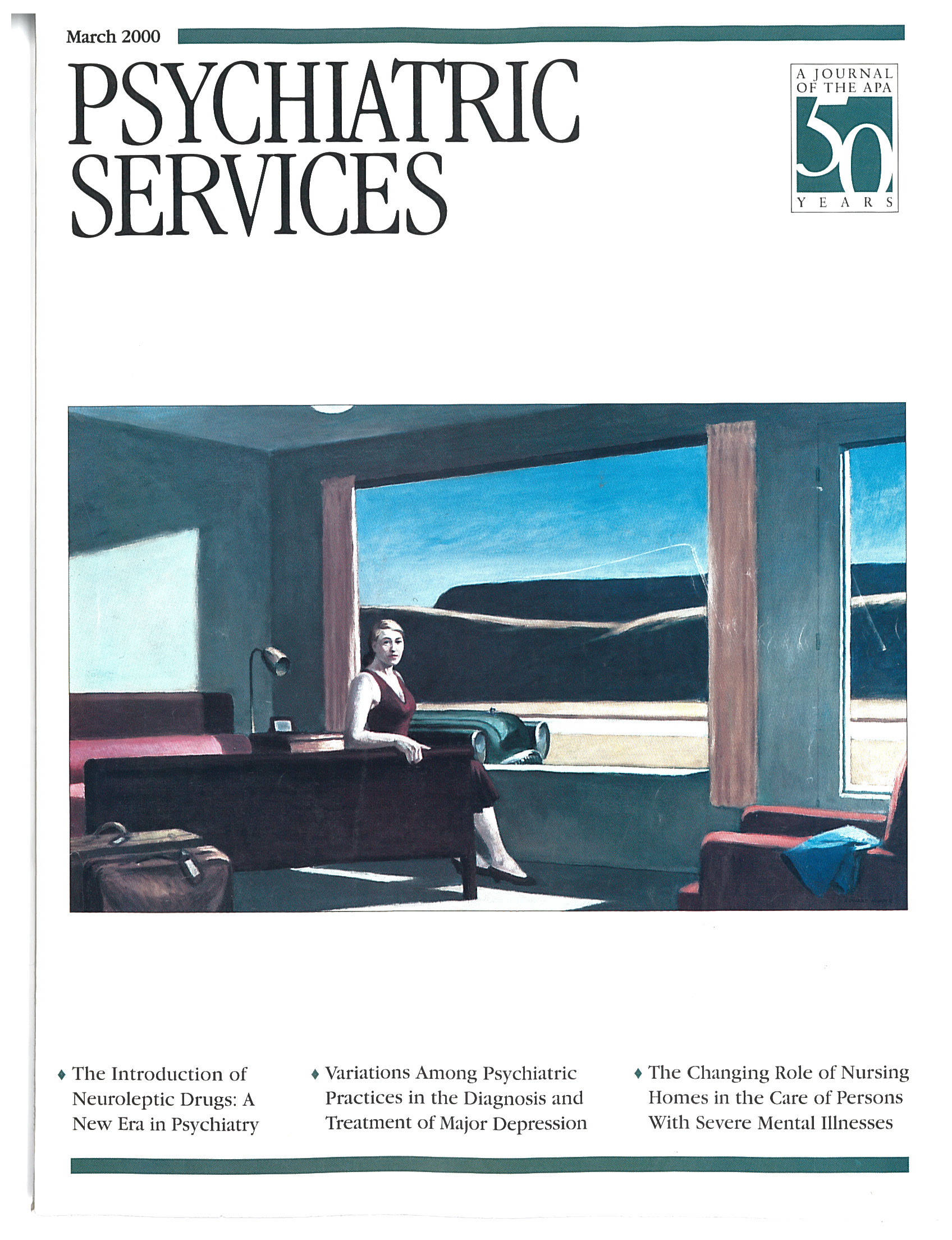The Release Bandwagon
Abstract
Editor's Note: The essay below, published in the Dr. Whatsisname column in the June 1959 issue of Mental Hospitals, takes a wry look at the wholesale discharge of patients from mental hospitals following the introduction of the new drugs. (See "The New Drugs (Chlorpromazine & Reserpine): Administrative Aspects" on page 327 and Dr. Robert Cancro's commentary and analysis on page 333.) The Dr. Whatsisname column appeared regularly in the journal for almost 14 years before it was discontinued in 1970 and the identity of its author formally revealed: Henry A. Davidson, M.D., a hospital administrator in New Jersey. Washington artist Ralph Robinson drew the cartoons.
We hospital psychiatrists may be short of personnel, time, money and supplies. But we are never short of patients. So we are not afraid of going out of business when we speed up discharge rates.
The pressure, indeed, is the other way around. Everyone wants us to send patients out as rapidly as we can. Our staff wants it because it eases their burden and it suggests that they are competent workers. The legislators want it because it reduces hospital costs. Our friends in the mental health movement are delighted when the turnover tempo is whipped up, since this can be credited to their work. And the superintendent who can show a higher discharge rate this year than last year feels proud of himself.
There is a bandwagon effect here. If State Hospital X shows a 2 per cent drop in census, the board of State Hospital Z wants to know what's the matter with Z? And to show that he's just as good as Brother Y, the superintendent at Z decides to discharge more patients this year. The clinical director is told to tell the chiefs of service to comb through the wards. If a patient can wait on tables in the staff dining room, why can't he wait on tables in the town diner? If he cuts plants in the hospital greenhouse, why can't he work for a florist downtown? And the chief tells the medical officer in the infirmary ward that his patients are properly a charge on their relatives, so see how many can be returned to the family's care. Social service is urged to find more foster homes, jobs or boarding homes for quiet, ambulatory patients. By the end of the year, under this whip, hospital Z shows a commendable turnover.
This is such an enchanting prospect that we sometimes forget that we have other responsibilities. The premature release of a patient may be an evasion of such responsibilities. There are the rare but dramatic assaults, suicides, killings, and other explosive acts sometimes committed by ex-patients. More commonly, the prematurely released patient relapses so soon that his release becomes a mockery and justifies questions about the hospital's judgment. Or the patient may find himself lonesome and bewildered in a world he doesn't understand, and become a pathetic piece of flotsam in a sea of hostility. To the casual observer, work in the hospital laundry may seem no different from work in a commercial laundry. But the patient who crosses the bridge may find himself unable to compete in the open labor market. This could be frightening after the security of an institution where, even though the meals may not be good, at least you always know where the next one is coming from.
A few decades ago, the danger was that the patient would be forgotten as soon as the ward door was locked behind him. But today, when more and more ward doors stay open, the pressure is all in the direction of hasty release. There is a curious irony in this, for once the cry was that the patient was becoming just a number on a chart. And now, perhaps, the patient's human needs for security may be forgotten in our anxiety to put bigger numbers in the "discharged" column.



